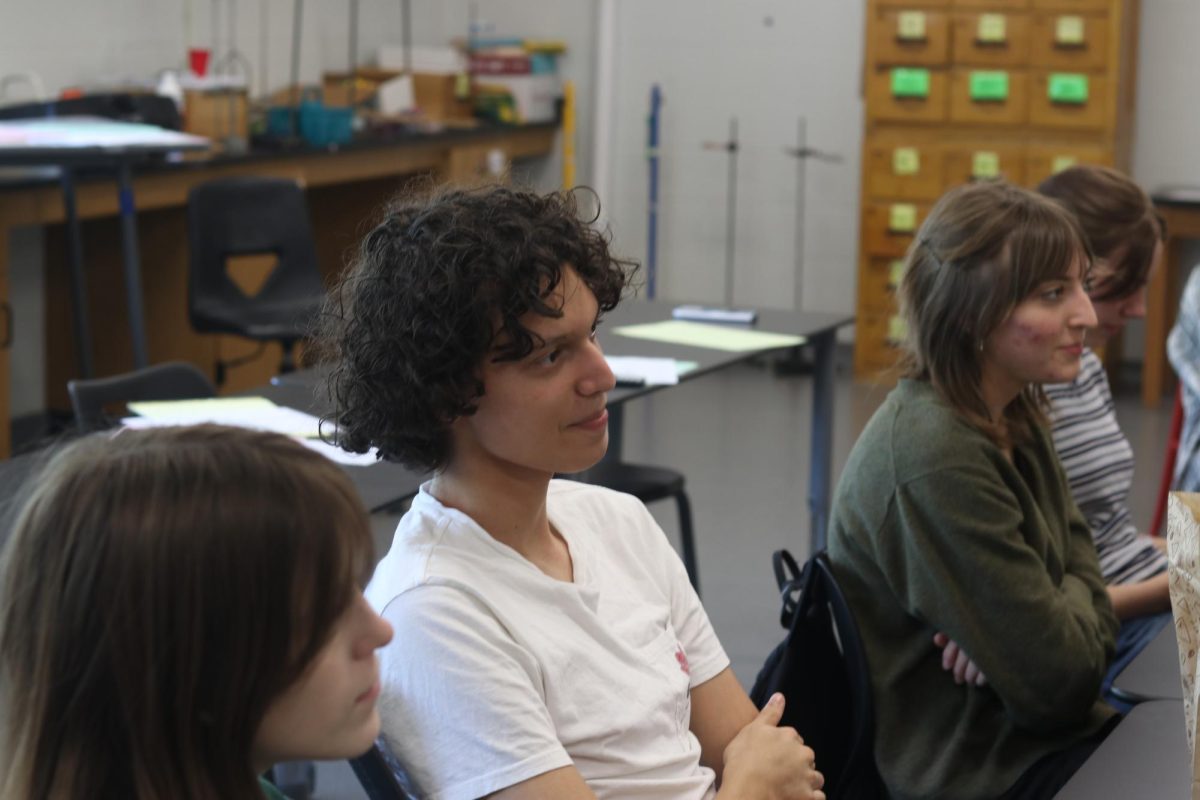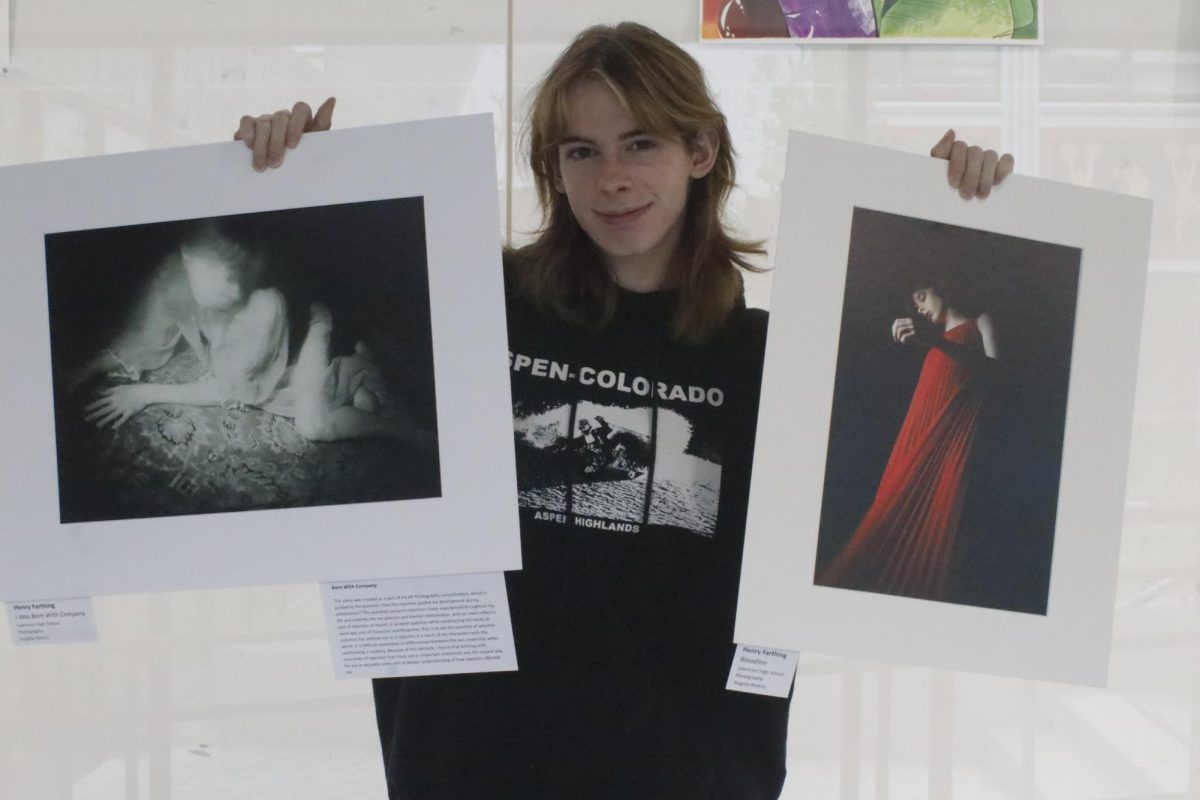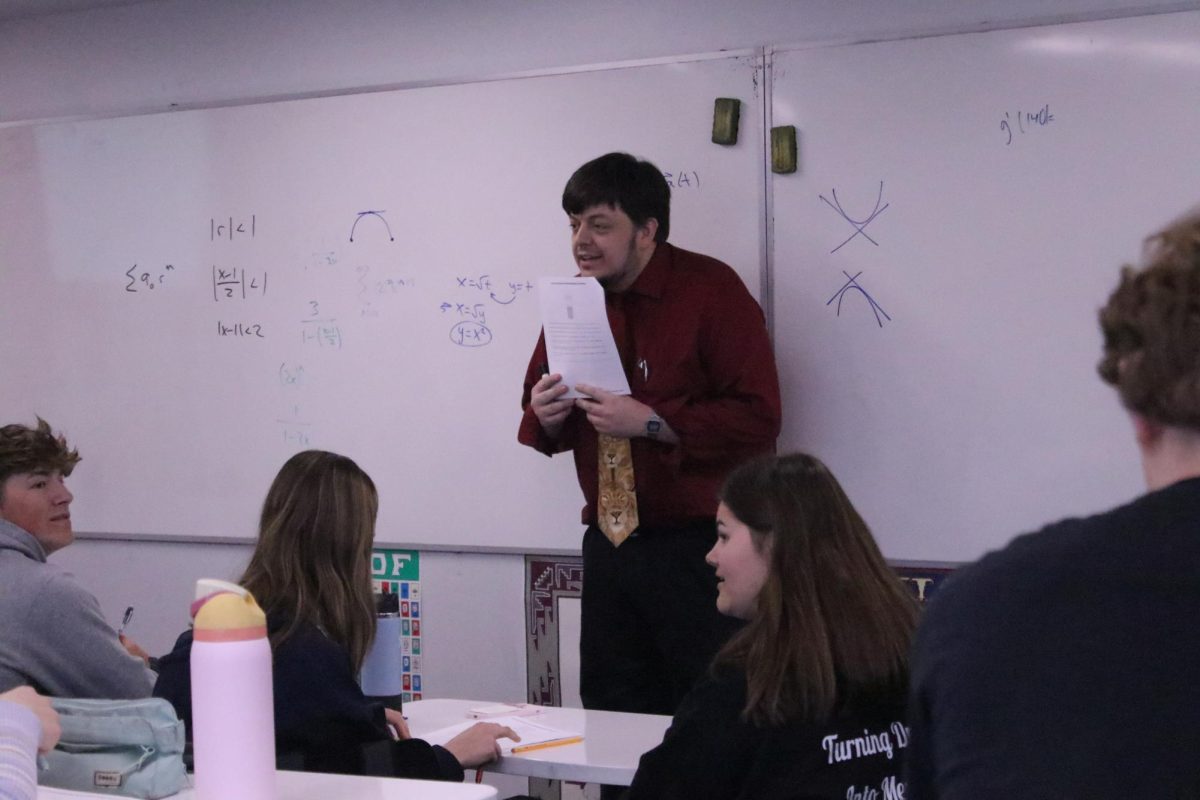Being obsessed with cats has become a major trend over recent months but for some anatomy students the obsession goes a little deeper, literally.
Jo Huntsinger’s anatomy classes get a closer look at these cats through dissection.
But cats weren’t always the focus of the classes’ attention.
“We used to be able to go up to the cadaver lab up at KU, and they actually had six cadavers,” Huntsinger said. “They just opened up all the tanks and we were able to go through and look at the human body, which I know sounds grotesque and everything, but it’s just fascinating to see exactly what you look like inside.”
Once the anatomy classes started to grow, people began to notice.
“The med center found out we were doing that, and I think they had a stereotype of high school students, that they were gawking at dead bodies, but that was absolutely not even close to what was happening,” Huntsinger said.
Nevertheless, the cadaver lab was closed for visits, so the classes had to dissect something else.
“Then we were dissecting fetal pigs,” Huntsinger said.
But the pigs weren’t close enough to the human body to do much good.
“Fetal pigs haven’t been born yet, so they didn’t have really well-developed organs compared to anything else,” Huntsinger said.
Because the pigs weren’t ideal, Huntsinger talked to people at the University of Kansas and eventually was advised to switch to cats.
“[I went to] their cat lab and when I saw a cat, I thought, ‘Oh my gosh, we have to do cats,’ because they look so much like us,” Huntsinger said. “And I know that sounds crazy, but they really do when you open them up. [They] just have very similar organs and [muscles].”
Although some people are concerned with where the cats come from, Huntsinger assures her students that the process is humane.
“They don’t have these cat farms where they’re growing the cats for us. They’re humane society cats that were going to be put down anyway,” Huntsinger said. “And they came from Wisconsin so nobody knows them. They’re anonymous cats.”
Even though they are “anonymous cats,” the process still bothers some.
“I’m kind of scared of cats, [and] this kind of makes it worse,” junior Jessica Lemus said.
Being scared is also part of the reason Lemus decided not to name her cat.
“I feel like it’d make it harder for me to dissect something I actually like,” Lemus said.
While Lemus has chosen not to get attached, juniors Abbey Berland and Haley Ryan are two of the many who named their cat.
“[We named our cat] Albert Felinestein,” Berland said. “We thought it would be really smart because he’s really skinny and really skinny people don’t do exercise and are really smart.”
Although Berland named her cat, she isn’t necessarily attached.
“[I’m] not really very [attached to ours], but the one next to us is really fat and I like that one,” Berland said.
But Berland appreciates the cats as unique learning opportunities.
“The guts [are the most interesting part] because they’re supposed to look a lot like ours, and I want to know what my guts look like, so that’s cool,” Berland said.
Berland does not appreciate the smell but said eventually “you kind of get used to it.”
Junior Lindsey Griffin also finds the smell disturbing.
“It wouldn’t be as gross if there wasn’t a smell,” Griffin said.
But for Lemus, the smell isn’t the worst part.
“The cutting [is the worst] because you can feel it breaking and everything, and that’s kind of [gross],” Lemus said.
Lemus and her partner senior Carly Davis take dissecting more seriously than most.
“We have this whole wardrobe we put on; we pull our hair back, and we have masks, gloves and full surgeon’s [scrubs],” Lemus said. “Her mom is a nurse at the hospital, so [Carly] brings it for us.”
Although dissecting cats has its struggles, it is a valuable learning experience for the students.
“It’s hard to explain to somebody how deep your skin is,” Huntsinger said. “You just gotta get your hands in there and feel some of these textures and then it helps you understand anatomy a lot better.”














